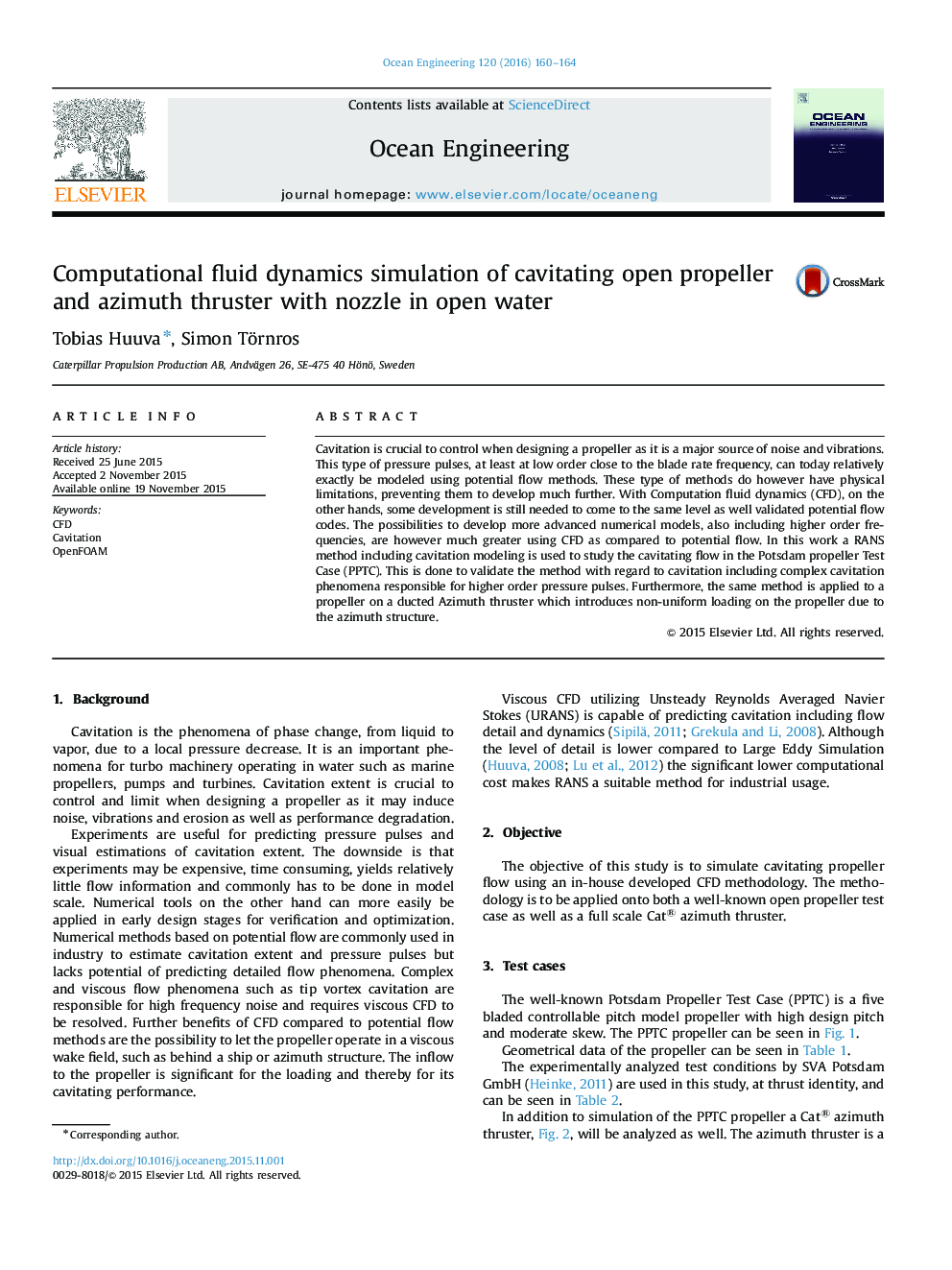| کد مقاله | کد نشریه | سال انتشار | مقاله انگلیسی | نسخه تمام متن |
|---|---|---|---|---|
| 1725039 | 1520670 | 2016 | 5 صفحه PDF | دانلود رایگان |
کلمات کلیدی
1.زمینه
2.هدف
3.حالت های آزمایش
4.روش شناسی
5.نتایج
5.1 حالت آزمایش PPTC
5.2حالت آزمایش رانشگر آزیموت
6.بحث و نتیجه گیری
• Applying computational fluid dynamics methods to marine product development.
• Modeling cavitation using computational fluid dynamics.
• Validation of cavitation modeling methodology.
• Application of a cavitation modeling methodology to a real application.
• Description of computational methodology for flow including cavitation.
Cavitation is crucial to control when designing a propeller as it is a major source of noise and vibrations. This type of pressure pulses, at least at low order close to the blade rate frequency, can today relatively exactly be modeled using potential flow methods. These type of methods do however have physical limitations, preventing them to develop much further. With Computation fluid dynamics (CFD), on the other hands, some development is still needed to come to the same level as well validated potential flow codes. The possibilities to develop more advanced numerical models, also including higher order frequencies, are however much greater using CFD as compared to potential flow. In this work a RANS method including cavitation modeling is used to study the cavitating flow in the Potsdam propeller Test Case (PPTC). This is done to validate the method with regard to cavitation including complex cavitation phenomena responsible for higher order pressure pulses. Furthermore, the same method is applied to a propeller on a ducted Azimuth thruster which introduces non-uniform loading on the propeller due to the azimuth structure.
Journal: Ocean Engineering - Volume 120, 1 July 2016, Pages 160–164
